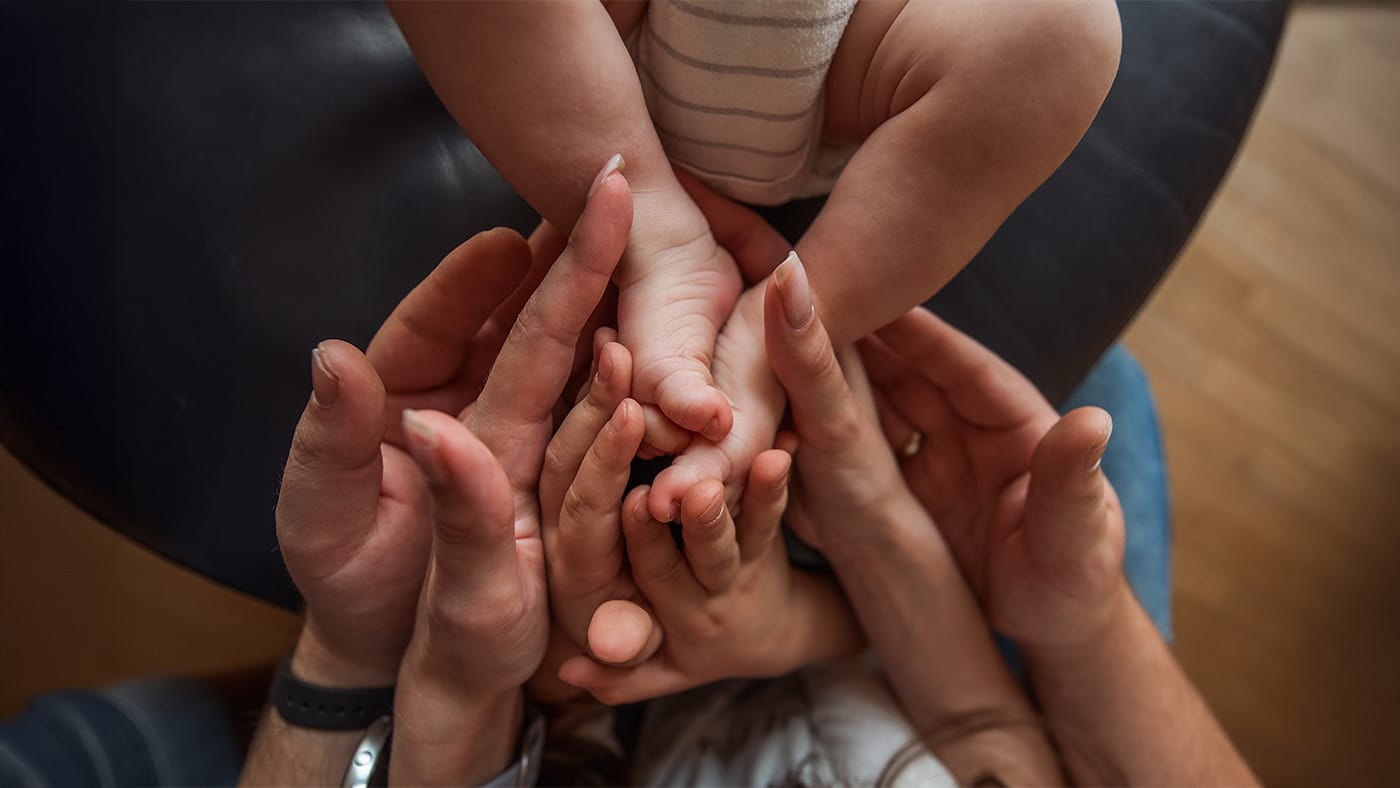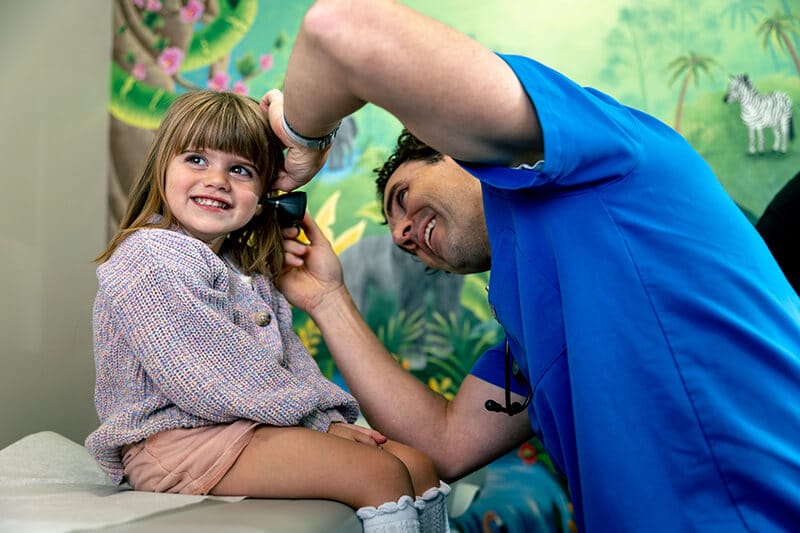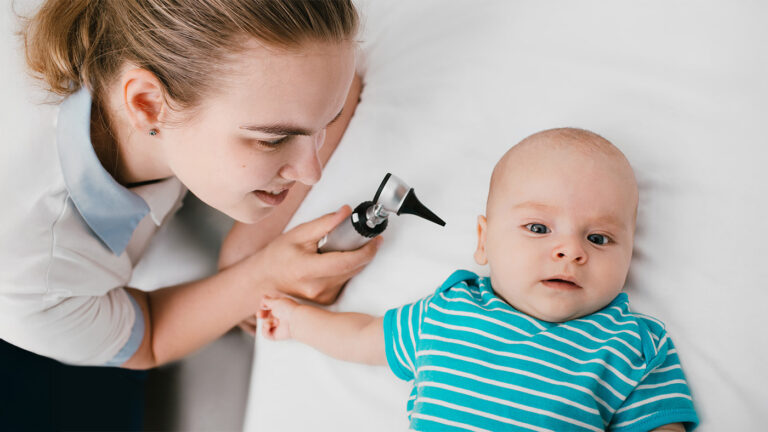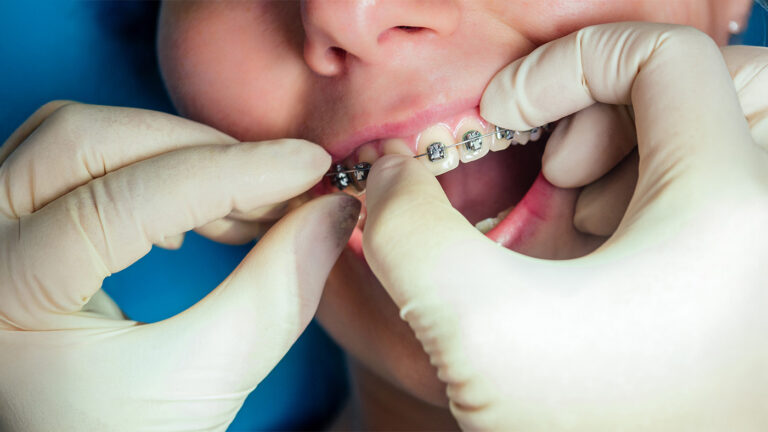Each year in the United States, approximately 3,500 infants die suddenly and unexpectedly before their first birthdays. In Utah, sudden infant death is the number one cause of death during the first year of life, but there’s plenty you can do to reduce the risk for your baby.
While we still don’t fully understand what causes sudden infant death, we’re getting better at preventing it. There was a dramatic decline in infant deaths in the 1990s, followed by a plateau. Today, what’s known as the triple risk model suggests sudden infant death occurs when three things happen all at once. First, you have an infant with intrinsic vulnerability (impaired cardiorespiratory, autonomic, or arousal responses). Second, that infant is at a critical developmental period. Third, the infant experiences an external trigger, like exposure to an unsafe sleeping environment. The model theorizes that these risks can result in a glitch in the immature nervous system of infants, where they do not arouse appropriately to a lack of oxygen.
The good news is that the overall risk of SUID is low (about one in a thousand). However, SUID disproportionately impacts certain ethnic groups in Utah, including Pacific Islander, Hispanic, and Indigenous infants. Other risk factors include lower economic status, exposure to secondhand smoke, premature birth, and housing instability.
What is SUID?
A growing list of terms and acronyms has understandably left many parents confused about sudden infant death. So, let’s demystify some of the terminology.
Historically, parents and healthcare providers referred to a phenomenon known as “crib death” because that’s where sudden infant death usually happens. You may also have heard these incidents referred to as sleep-related death. For decades, the conversation centered on SIDS, short for Sudden Infant Death Syndrome. More recently, you may have started seeing SUID, short for Sudden Unexpected Infant Death. It’s a term used to describe any unexpected death in the first year of life, where there is no obvious cause prior to an investigation.
In 2009, the Centers for Disease Control (CDC) began collecting a case registry to improve understanding of sudden infant death and determine effective interventions. To date, the CDC supports monitoring in 32 states, gathering data on approximately 40% of all SUID cases.
Utah joined the effort in 2019 and a report published by the Utah Department of Health and Human Services found a total of 137 sudden unexpected infant deaths over that 5-year period. Of those, 131 were sleep-related, and more than 90% occurred in a sleeping environment with at least one unsafe risk factor such as soft bedding, loose bedding, or co-sleeping.
What is the difference between SUID and SIDS?
These terms are often used interchangeably but may refer to slightly different circumstances. SIDS, short for sudden infant death syndrome, specifically refers to cases of sudden infant death with an unknown cause, even after a full investigation.
By contrast, SUID is an umbrella term encompassing all unexpected infant deaths, even those which are explained. SUID may also include sudden unexpected deaths from suffocation, entrapment, infections, metabolic disorders, and more.
Myths & Facts About SUID
There are many myths surrounding SUID, but understanding the facts can help you feel more confident and informed. Let’s clear up any confusion by debunking common myths about SUID and shining light on the facts that truly keep babies safe.
MYTH: SUID is Contagious
Fact: SUIC is not contagious. The most common cause of sudden unexpected infant death is an unsafe sleeping environment combined with intrinsic risk factors. It is the result of circumstance and can’t be passed from one person to another.
MYTH: Cribs Cause SUID
Fact: For many years, parents feared “crib death” because of the association between SUID and sleep time. Cribs don’t cause SUID directly, but unsafe sleeping conditions like loose bedding, soft bedding, or gaps between the mattress and the crib frame do pose a risk.
MYTH: Sleeping on the Back is Dangerous for Babies
Fact: The safest way for your baby to sleep is on their back. Some parents worry their babies might choke on spit-up while sleeping on their backs, but you don’t need to worry. Your baby has built-in safety mechanisms to keep their airway clear. Tummy sleeping is cute, but it increases the risk of SUID.
MYTH: Vaccines Cause SUID
Fact: There is zero evidence that vaccines cause or increase the risk of SUID. In fact, while the relationship isn’t totally understood, recent studies have shown that immunizations have a protective effect against SUID.
MYTH: All Baby Products on the Market are Safe
Fact: The market is flooded with all kinds of adorable accessories for your newborn, not all of which are safe for bedtime. Skip the weighted blankets and stuffed animals; your baby doesn’t need them until they can ask for them. Even safe products, such as car seats, should only be used as intended and should not be used as a sleeping environment.
Preventing Infant Death Syndrome
While there’s no surefire way to prevent SUID, you can minimize the risk by reducing controllable risk factors. Keeping a sleep-safe environment reduces the risk of all sleep-related deaths, including the majority of SUID cases.
Minimizing SUID Risk With A Safe Sleep Environment
The American Academy of Pediatrics recommends a safe sleep environment as the number one way to reduce the risk of sudden infant death.
Supine Position
Lay your baby on their back for naps and at bedtime. Sleeping on the stomach is not recommended because it increases the risk of suffocation. Similarly, sleeping on the side makes it more likely your baby might roll onto their stomach during the night.
Safe Sleep Surface
Your baby’s bed should be firm and flat, with no incline. Make sure your crib or bassinet meets current consumer safety standards.
Room Sharing Without Bed Sharing
Babies should sleep in their own crib or bassinet. Don’t let your baby sleep in the same bed with you. If you’re comforting your baby and they fall asleep, move them to their crib. This also goes for twins, multiples, older siblings, and pets. Your baby shouldn’t share a bed with anyone or anything. However, many parents want to be close to their newborns and opt to keep the crib in the same room with them.
Bare Crib
Your baby’s crib should be empty of pillows, blankets, stuffed animals, crib bumpers, and anything else that could pose a suffocation risk. The safest crib is a bare crib.
Snug Fit
Use a mattress that’s designed for your crib and fits snugly. There shouldn’t be any gaps between the mattress and the crib frame. Cover the mattress with a fitted sheet and nothing else.
Avoid Overheating
It might seem cruel to put your baby to bed without any pillows, blankets, or stuffed animals to keep them comfortable, but they don’t need those things. If you’re worried your baby might be cold, you can dress them in warmer clothes. Be careful not to overdress. Overheating increases the risk of SUID. Only dress your baby in one more layer than you wear in the same environment.
Additional Ways to Reduce the Risk of SUID
In addition to a safe sleeping environment, there are a few other things you can do to reduce your infant’s risk of SUID.
Breastfeeding
A diet of human milk may reduce the risk of SUID when compared with formula feeding. Ensure you are eating a nutrient-rich diet that supports your milk production.
Avoid Substances
Avoiding exposure to nicotine, alcohol, marijuana, opioids, and other illicit drugs during pregnancy and after birth reduces the risk of SUID.
Regular Medical Care
Receiving prenatal care reduces the risk of SUID. After your baby is born, schedule and keep all well-child visits and checkups. Stay on track with your child’s immunizations.
Pacifier
There is evidence that pacifier use reduces the risk of SUID. However, don’t force your baby to use a pacifier if they aren’t interested, and wait until you have established nursing before introducing a pacifier. If it falls out during the night, you don’t need to put it back in. And never hang a pacifier around your baby’s neck.
Tummy Time
While your baby should never sleep on their stomach, tummy time is a super important part of their daytime activities. Tummy time helps your baby strengthen muscles and facilitates motor development.
Timeline of SUID Risk
While SUID is defined by any unexpected death in the first year of life, most instances happen in the first four months, with peaks at one and three months. By the time your baby is six months old, the risk of SUID declines significantly. Maintain the SIDS prevention guidelines above for a safe sleeping environment until your baby is at least a year old.
If you have any questions or concerns during your baby’s first year (or anytime) the team at Families First Pediatrics is here to help!
SOURCES:
CDC, AAP Sleep Guidelines, NICHD Sleep Recommendations, AAP Sleep Related Illnesses, AAP Sleep Recommendations, NICHD Safe to Sleep, SIDS.org, NICHD SIDS Myths




